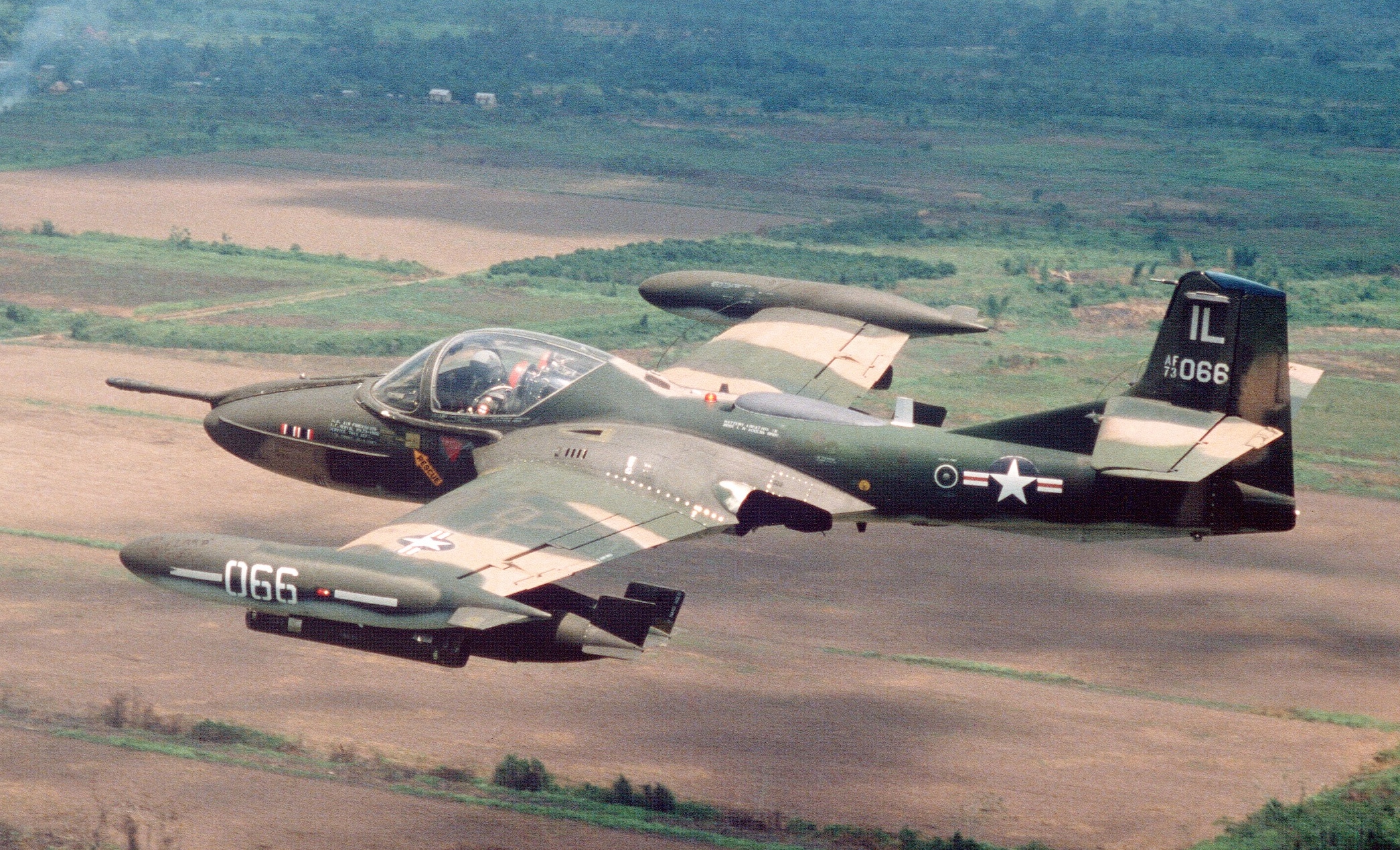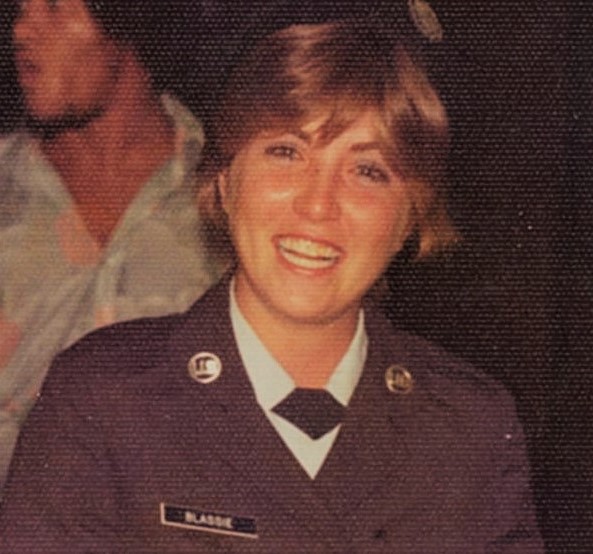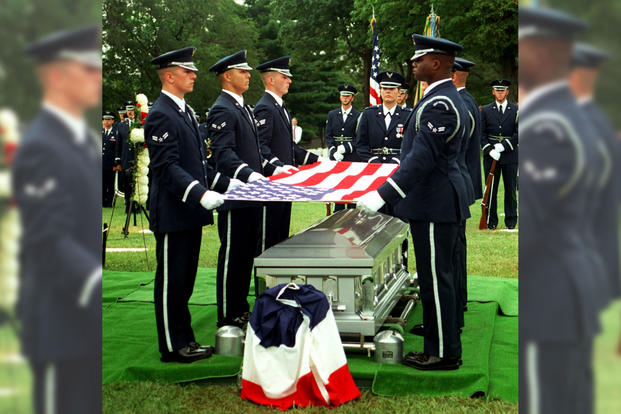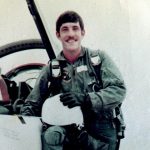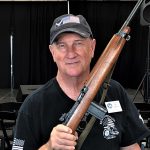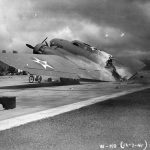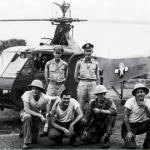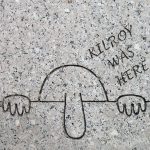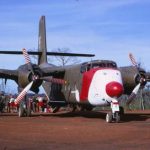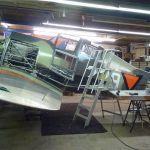Shot down in enemy-held territory while on a bombing run in Vietnam near An Loc, 1st Lt. Michael Blassie was listed as MIA (Missing in Action) and the body said to be unrecoverable. In reality, his remains were recovered almost six months after the crash, but ‘misidentified’ and labeled ‘unknown’ then stored away under the label X-26. In 1985, the remains of X-26 were interred at the Tomb of the Unknown in Arlington National Cemetery to symbolize the Vietnam War Unknown. Under pressure from the Blassie family and members of the forensic community, the remains were disinterred in 1996 and finally identified through DNA testing to be the remains of 1st Lt. Michael Blassie. Patricia Blassie was just 14 years old when her big brother lost his life in Vietnam. In Part II of ‘Coming Home’, she shares the families’ story, the heartbreak, the frustration, and the long painful struggle to ‘bring Michael home.’
In Patricia’s own words, with limited editing for amplification: “I was born on August 17, 1958 in St. Louis, MO. There were five siblings, with Michael the oldest. He was 10 years old when I was born, so now he’ be 71. He was the kind of big brother you looked up to, soft spoken, that big smile of his, and when he left for the Air Force Academy we were all so proud of him. I didn’t understand everything that was going on about him attending the Academy, but it was so exciting. Mike sold newspapers as a young man, always working, playing soccer and tennis. We all loved to compete. My sister, Judy, was only three years younger than Michael, so she looked upon their relationship differently than I did. But it was always the five us, we were a unit.
“The last day we took him to the airport as he left for Vietnam, Michael looked back at us and waved. We had no idea that was the last time we’d ever see him. Of course mom and dad were concerned, they understood war; I didn’t. I never dreamed I’d never see Michael again.”
Mecca: Tell the reader’s about the day the chaplain came to break the tragic news to the family.
“That day changed the Blassie family forever. It’s just like in the movies, they come to your house; they tell you what they know or think they know, then they leave. Mike was 24 when he was killed, I was 14. I’d left school early that day and I looked out the window when I heard a car door slam. I thought, ‘What is that?’ I went into the backyard and waited, I mean, everything seemed so strange. A neighbor came over to get me, saying, ‘Pat, you need to go inside.’ So I did and knew something was horribly wrong. They said Michael had been killed. They had a letter from his flight leader, James Connally, who recapped what had happened. But not bringing the remains home…it was so sad, but we wanted to know the rest of the story. We wanted the entire truth, but they couldn’t tell us that.
“Michael was participating in Operation Linebacker I, a very intense battle, and a lot of people were lost on the same day we loss Michael on May 11, 1972. The choppers did what they could, but couldn’t get to Michael. I thought he was MIA, but the military claimed he was KIABNR – Killed in Action, Body not Recovered. We were told his plane was streaming fuel then inverted, no communication, Michael went down and the plane exploded. They saw no parachute, yet the artifacts eventually discovered were not burnt, so maybe he did eject. I guess we’ll never know. After the internment at Arlington, we discovered documents and we wanted DNA testing, but we were told the bones were probably so charred that the DNA test was not a possibility. But we persisted, and discovered the bones were not that charred.
“We called Major Webb (Major Johnie Webb was in charge of the Central Identification Laboratory in Hawaii at the time) and thanked him for what he did. He followed all the orders given him, except the order to destroy the documents and Michael’s artifacts. Major Webb hid Michael’s file, X-26, in the casket, so thankfully Michael’s records and artifacts were not destroyed.”
Mecca: The South Vietnamese patrol and American advisors found the remains six months after the crash, but the Blassie family did not know that for 26 years. What were your feelings?:
“Very hurtful. We realized decisions were being made for our mom and dad. I thought, ‘Wait just a minute here, a South Vietnamese scout team with American advisors discovered the remains, found an ID and artifacts, put them on a chopper and considered their job done. I don’t care what happened, but the documents showed that patrol went into Michael’s crash site to find him, and they did. But for whatever reason, the first bad decision was not telling the family. The government does not have the right to keep such information from the family.
“When I looked into all the documents and from my personal research, it was obvious that improper decisions were being made and all of sudden Michael is the unknown representing the missing from the Vietnam War. So they finally took him off the shelf, file X-26, and for that I’m thankful. When I think about Michael sitting on that shelf from Oct of 1972 until 1984, it just blew me away. At least he went into a place of honor, the Tomb of the Unknown. Mike was serving once again with dignity and honor as the representative of the Vietnam War, but once we found out it was indeed Michael, he was no longer ‘unknown’.
Mecca: How did your parents handle all of this?
“When something like this happens in a family, and this is my personal point of view, this kind of thing can bring a family together or tear it apart. We never talked about it, there was not anything to talk about; Michael just didn’t come home. My parent’s marriage did not survive. I don’t know if Michael’s death was the main contributor to the failed marriage, but you grow apart sometimes during this kind of tragedy. My father went to his grave in 1991 not knowing the rest of his son’s story.”
Mecca: That’s so tragic.
“Yes, but it was our mother that looked at us and said, ‘I want to bring my son home.’ She faced criticism from people, but would look at them and say, ‘but it’s not your son.’ I am really proud of my sisters, Judy and Mary, and my brother, George, he is the youngest, and we all agreed with mom. It was the right thing to do.”
Mecca: Your mother was criticized? Is that explainable?
“Going back in time, the way we treated Vietnam veterans, we did not honor them as a government and as a nation, and then the Vietnam Wall was built, but not by the government. Every war had an unknown, but as a family we wanted the remains in the Tomb to be disinterred. To many Vietnam veterans, it was pretty upsetting to have the Vietnam ‘unknown’ disinterred. I talked with many of them and they would say, ‘But this is the one honor we received,’ and the Blassie family was disrupting that honor. I would reply, ‘All the Vietnam unknowns should be accounted for by the government.’ I would remind them of that, and I’d tell them our family story. We’d go on TV saying that we wanted Michael home, but those were just soundbites. With the Vietnam veterans, I’d sit with them and explain that Michael was one of their brothers, and all of us wanted to bring all of the MIAs home. I’d also remind them that Michael was never an unknown soldier…he was made one.”
Mecca: I think it will be difficult for the readers to believe the military ordered the documents to be destroyed.
Major Webb followed his orders, except destroying Michael’s documents and artifacts. People say, ‘What about the other unknowns?’ Well, there’s nothing available to lead us to the other unknowns, not yet anyway. Michael’s situation was an anomaly.”
Mecca: Did Michael’s death spur you to join the Air Force?
“Four years after Michael’s death when I was graduating from high school, some recruiters came to the school….I didn’t have any direction and the family was lower-middle income, I didn’t even know how to go about college. Mike always knew what he wanted, I didn’t. The recruiters said if I joined the Air Force, I’d travel, get excellent training, and an education. I signed up the next day. In my 17 year old mind, that sounded like a good deal. I signed up with the Air Force since I knew the Air Force, or I should say, I was more familiar with Air Force. But until I joined up, I didn’t know what it meant to serve, what it means to our nation, and what Michael really did for us, as did all our veterans and all those who went before us, but I grew into that mold.”
Mecca: Once in the Air Force, did you like what you were doing?
“I loved it. I got to travel so many places in the world I would never have been able to visit, I got a great education, I have a Master’s Degree, and I was trained like no other. I’m grateful how God works in our lives. Sometimes we don’t know what we don’t know, what is the purpose in life? And the training I received in the Air Force, well, wow, and then I went into public affairs. You do certain things to get the mission done, and I tell you this, had I not had that training I would not have been able to help my family to finally bring Michael home. I will always be grateful to the Air Force for my training. It was difficult at times, working to have Michael returned home, very intense, and you get that feeling in your stomach like, ‘Geezz, this is scary.’ But you carry on.”
Mecca:Did you receive any flak from the Air Force or your superiors?
“I was at the Pentagon at the time with the rank of Captain. I told my leadership what was going on. One time I did wear my uniform for an interview and it was getting close to the time for the pentagon to make a decision on Michael’s disinterment. I was pulled in and told never to wear my uniform during an interview. You see, when I’m in uniform, I’m speaking for the Air Force, and that was a difficult day for the Air Force. I don’t feel that I was held back, my career was still going on, I was up for Major, but Michael was more important than my ranking.”
Mecca: Did the Air Force ever say anything to you about Michael? Did they offer you support?
“No, I don’t recall anything like that. I know when we brought Michael home to St. Louis, four to five thousand people lined the streets and showed up for the funeral. Family friends and Michael’s friends were there. Michael’s flight leader, James Connally was there, as was Bill Parnell who was with the South Vietnamese patrol and had kept Michael’s remains overnight. They wanted to see the job done, they wanted Michael to be honored. No, I don’t recall any congratulatory call or comment from the military.”
Mecca: And where is Michael’s final resting place?
“At Jefferson Barracks in St. Louis, it’s a National Cemetery. We wanted Michael home, and we were serious about it.”
Mecca: Are you still in the military?
“I retired a year ago in July of 2018, after almost 40 years in the uniform. I served as enlisted for 11 year, earned a degree then received my commission in 1989. I served as an officer from 1989 until 2018, retiring as a full bird Colonel. I wouldn’t trade my enlisted years for anything. My initial goal was Chief Master Sergeant, you know, a Commander Chief. I had a Chief Master Sergeant tell me getting a commission was what I needed to do, he said I had the potential and to ‘go for it.’ I’m thankful I made that decision, and I’m thankful the Air Force had the confidence in me. I started out in supply as an enlisted airman, then cross-trained into public affairs.
Mecca: This is a unique story. The Blassie family and Michael’s story will go down in history.
“I realize that, and that’s why I feel a responsibility to continue to tell Michael’s story and to share it with others. I didn’t ever expect this to happen to our family, none of us did. But I was thinking, ‘It’s not what happens, but what you do with what happens.’ I believe my family did the right thing, and Mike is home.”
Mecca: Your final thoughts
“I think about Michael often. He has come to the forefront in so many ways. I know had he lived, he would have mentored me and taught me in so many different ways. But in his death, his service, and what occurred with his selection to serve in the Tomb for 14 years representing Vietnam, well, Michael’s story is never ending and always changing. I continue to grow with the changing dimensions. You know, when the family discussed what to do about Michael, my brother George said, “It’s really an honor where Michael is buried, it’s sacred ground….but he’s a hero, and he deserves to be known.” That really stuck with me, ‘what’s in a name,’ a name, it’s the very first thing we say in introduction. I will always remember what a Navy Seal said to me, ‘Pat, what do we veterans put on our tombstones? Our name, our service, and what years we served. That defines your brother.’ Your name, that is so important. I’m grateful for what Mike taught me in life, and, yes, in his death. Thank you for allowing me to share his story with your readers.”
NOTE: As a Vietnam veteran and Air Force veteran, the story of Michael Blassie touched a tender spot deep within my soul. A 24 year old flyboy who was shot down in a war, 10,000 miles from home, and whose remains stayed in limbo for 26 years, was finally returned home to St. Louis, MO. It’s hard to fathom the misidentification, the remains sitting on a shelf labeled X-26 as if a secret formula existed, and orders to destroy all artifacts and documents. Yet ethical people, both military and civilian, did the right thing at the right time. Doing ‘the right thing’ is always ‘the best thing.’ I earnestly hope and pray that 1st Lt. Michael Joseph Blassie is now and forever will be, Resting in Peace.
Pete Mecca is a Vietnam veteran. For story consideration visit his website at VETERANSARTICLE.COM and click on “contact us.”







